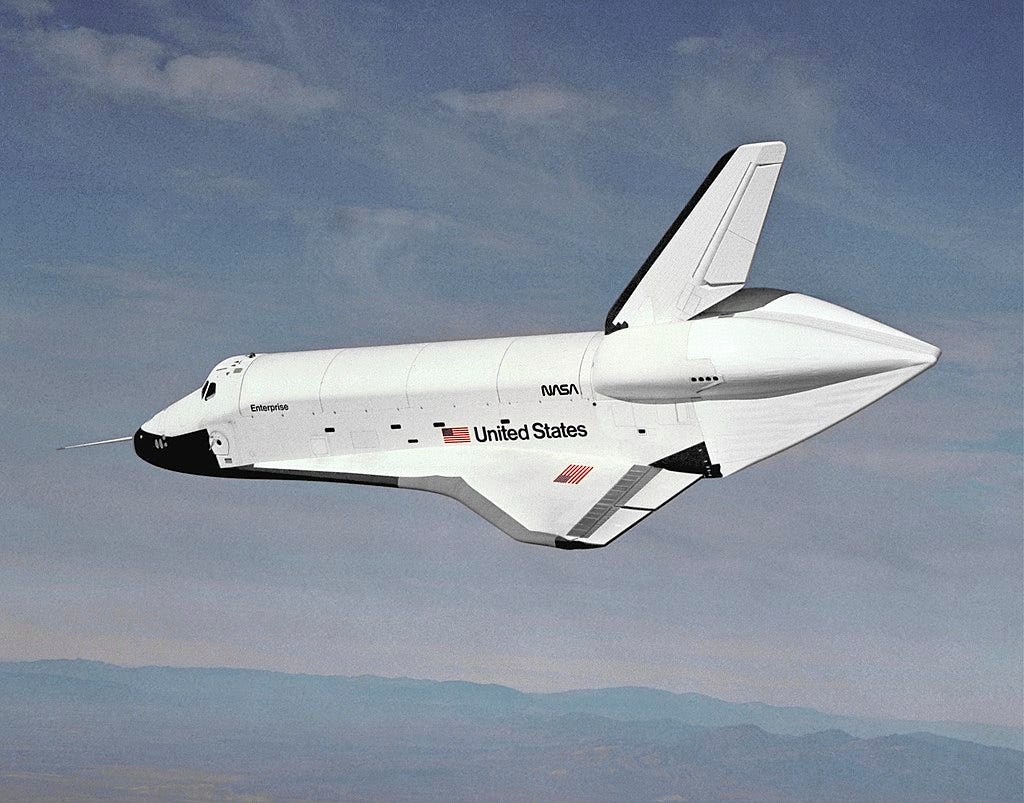On this day in 1977, the Space Shuttle Enterprise makes its first free flight. Did you know that NASA built an orbiter than never went into space? The Space Shuttle Enterprise has been called “one of NASA’s most elaborate and expensive playthings”—yet the Space Shuttle Program would never have taken off without it.
No pun intended, of course.
Enterprise got its name because a bunch of Trekkies lobbied for it. Literally! The Space Shuttle was supposed to be named “Constitution” in honor of the nation’s bicentennial . . . . Also: “Constitution” was the name of an early U.S. Navy frigate, and each Space Shuttle would eventually be named after a seafaring vessel. Nevertheless, Americans wrote 100,000 letters petitioning for a name change, and President Gerald Ford complied.
Members of the Star Trek cast even attended the shuttle’s rollout ceremony.
Hmm. How many of those attendees realized that the name actually has much deeper roots than a mere television show? The original Enterprise was a British warship captured by Benedict Arnold during the American Revolution. This was back in the days when Arnold was a fiery Patriot, not a traitor. Arnold’s Enterprise began a long tradition of American naval ships named Enterprise—and now the tradition would carry over to a Space Shuttle, too.
Enterprise was a full-scale prototype of a Space Shuttle in many ways, but it was missing elements that it would have needed for a real journey into space: Enterprise never had engines, and it never had a heat shield. NASA thought it would retrofit Enterprise with these items someday, but the project never became financially feasible. Other orbiters such as Challenger and Endeavour were built instead.
Over the course of nine months, Enterprise would be used to test various aspects of the Space Shuttle in flight. During the first flights, Enterprise was strapped to the top of a 747, allowing such factors as wind resistance and maneuverability to be tested. Next, Enterprise was tested with a crew aboard. Finally, in August 1977, Enterprise was released from the top of a 747. It flew freely, enabling NASA to test the unpowered, glider-like landing that was planned for all Space Shuttle missions.
The Space Shuttles would have some engines, but they wouldn’t have the big heavy ones that would have been required for a normal powered landing.
The tests performed by Enterprise proved invaluable. It was NASA at its best! Yes, making mistakes sometimes, but also persevering, learning, and ultimately triumphing with the launch of the Space Shuttle Columbia on April 12, 1981.
In 1985, Enterprise was retired and put on display at the Smithsonian National Air and Space Museum. Later, it was moved to the Intrepid Sea, Air & Space Museum where it can still be seen today.
Yes, it’s an orbiter that was never used in space, but it’s also a healthy reflection of the pioneering spirit that has always made America great.



Great reminder of the long process of developing a true space shuttle. Thank you, Tara Ross!
Great article of the next generation of Space flight, now were looking to the moon again then Mars! To boldly go where no man has gone before!! Thanks Tara!